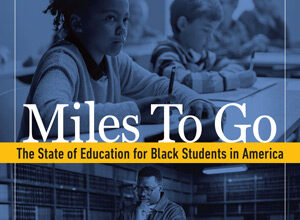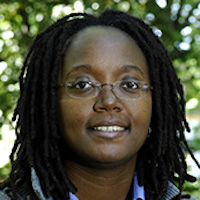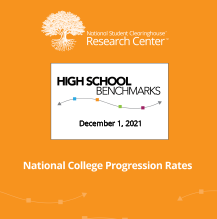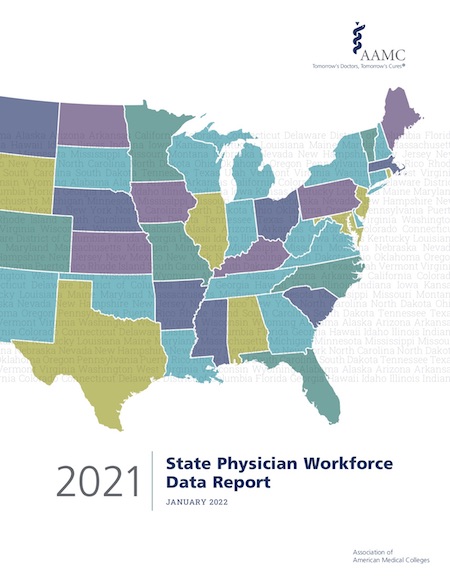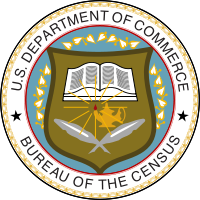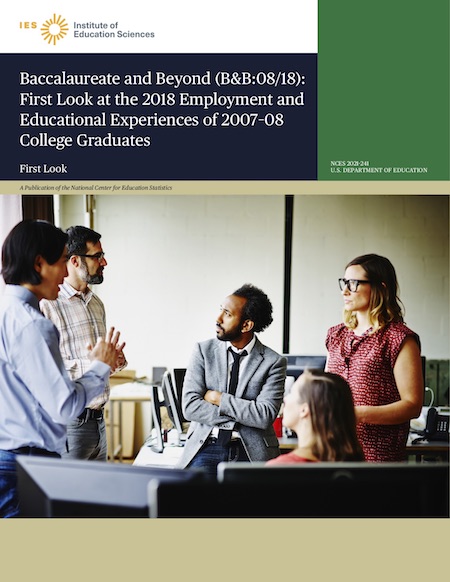A Severe Lack of Teacher Diversity in the Nation’s K-12 Schools
A new report from the U.S. Department of Education finds that 80 percent of the nation's K-12 teachers are White, while only 45 percent of the students in these schools are White. African Americans are 6.1 percent of all teachers in public schools but 15 percent of all students.
How the COVID-19 Pandemic Impacted the Racial Gap in Unemployment
In 2020, when the pandemic struck, 19.4 percent of the Black civilian workforce (those who were employed or seeking work) experienced unemployment at some point during the year. More than 4.2 million Black workers were unemployed at some point during the year.
The Significant Racial Gap in Marriage Rates in the United States
In 2021, nearly 54 percent of the White population over the age of 15 was married compared to 31.2 percent of the Black population. Only 27.5 percent of the White population had never been married compared to half of the Black population.
Legislation Aims to Boost Racial Diversity in the Management of Higher Education Endowments
Women- and minority-owned asset management firms currently control only 1.4 percent of the over $82 trillion in managed assets in the United States compared to the 98.6 percent of assets controlled by firms owned by White men.
Racial Differences in the Age of Doctoral Degree Recipients in the United States
On average, Whites who earned doctorates in 2021 were 31.4 years old when they received their doctoral degrees. For African Americans, the average age was 36.6. Some 24.7 percent of all Blacks who earned doctorates in 2021 were over the age of 45. For Whites earning doctorates in 2021, only 8.7 percent were over the age of 45.
The Very Wide Racial Gap in College Graduation Rates
New data from the U.S. Department of Education shows that nearly 68 percent of all White students entering four-year colleges seeking a bachelor's degree in 2015 had graduated within six years. But only 45.7 percent of Black students had earned a bachelor's degree within six years. The racial gap was even larger at price, not-for-profit colleges and universities.
The Persisting Racial Gap in Scores on the SAT College Entrance Examination
The results showed that only 19 percent of African American test takers met the college and career readiness benchmark for both reading and mathematics, the lowest level of any racial or ethnic group. Some 53 percent of Whites met the readiness benchmarks in both reading and mathematics. Some 54 percent of all Black test takers did not meet the minimum benchmark in either reading or mathematics. For Whites, the figure was 21 percent.
Scores on the ACT College Entrance Examination Drop and Large Racial Gap Persists
For the fifth year in a row, the average score for African American students dropped. The most striking statistic is that only 5 percent of all Black test takers were rated ready for college-level courses in all four areas of English, mathematics, science, and reading. Whites were nearly six times as likely as Blacks to be prepared for college-level work in all four areas.
How Introductory STEM Courses Weed Out Blacks and Other Underrepresented Students
Researchers found the association between low performance in an introductory STEM class and failure to obtain a STEM degree is stronger for Black and other underrepresented minority students than for other students, even after controlling for academic preparation in high school and intent to obtain a STEM degree.
The Persistent Black-White Poverty Gap Hinders African American Access to Higher Education
In 2021, 18.1 percent of all Black families were living in poverty. For non-Hispanic White families, only 5.7 percent were living below the poverty threshold. The Black-White family poverty rate gap where African American families are about three times as likely to be poor as White families, has remained virtually unchanged for more than a half century.
Study Finds Little Progress for African Americans in Academic Radiology
In academic radiology in 2019, Blacks were 3 percent of the assistant professors and 2 percent of the associate professors and full professors. The proportion of Black or African American department chairs was 5 percent in 2019. These percentages have not changed significantly since 2010.
Racial Differences in Attrition Rates at Medical Schools in the United States
The study found that students who were from an underrepresented racial or ethnic group, and also from a low-income family who lived in an underresourced neighborhood had a dropout rate that was nearly four times the rate of White students who were not from a low-income family and did not live in an underresourced neighborhood.
Why Is The College Board No Longer Releasing Racial Data on Advancement Placement Test...
In years past, JBHE has published reports on the racial gap in participation in the Advanced Placement program of The College Board. Now, The College Board has decided to withhold data from the public on the racial breakdown of AP test scores.
Student and Faculty Diversity Reduces the Black-White College Graduation Rate Gap
A study led by Nicholas A. Bowman, Mary Louise Petersen Chair in Higher Education at the University of Iowa, finds that college graduation gaps between Black and White students tend to shrink when there are more students of color or faculty of color on campus.
Study Finds Higher Levels of Black Maternal Mortality Due to Effects of Racism ad...
The data revealed a much greater disparity between women of color and White women than had been determined in other studies. The authors found that maternal mortality rates for Black women in their early 20s are consistent with those of White women in their mid-30s or older.
New Report Shows Diversity Efforts in High-Tech in Academia and the Workforce Have Stalled
Despite comprising 15 percent of the K-12 student population, Blacks make up just 6 percent of students taking advanced placement computer science courses. In 2020, only 8 percent of bachelor's degrees conferred in computer science were earned by Black graduates, a decrease since 2016.
The Growing Racial Wealth Gap and Its Impact on Higher Education
If we exclude home equity, the median net worth of non-Hispanic White households in 2019 was $79,010. For Blacks, the median net worth - excluding home equity - was $3,630. Thus, Whites had nearly 22 times as much wealth as Blacks when we exclude the value of homes. Four year earlier, Whites held only a 12-to-1 advantage.
Grading the Schools With the Largest Athletic Programs on Their Diversity in Leadership Posts
The latest report on the status of women and racial and ethnic minorities in leadership positions at the 130 educational institutions in the Football Bowl Subdivision of the NCCA has been released by The Institute for Diversity and Ethics in Sport (TIDES) at the University of Central Florida. These are generally the schools with the nation's largest athletic programs.
How the COVID-19 Pandemic Influenced College Enrollment Rates
A new report from the National Student Clearinghouse Research Center finds that college enrollment rates for 2020 high schools graduates have fallen significantly, especially for students from schools with a large percentage of students from low-income or underrepresented groups.
Comparing the Black Population to the Number of Black Doctors by State
Blacks are 10 percent or more of all practicing physicians in the District of Columbia, Georgia, Mississippi, and Maryland. Georgia fares far better than most southern states. Blacks make up 31 percent of the population and 16.3 percent of the doctors.
The Teacher Workforce Is Becoming More Diverse But Is Not Keeping Up With Student...
At the high school level, 52 percent of the students were White but 78.2 percent of all teachers were White. Blacks were 14.3 percent of all high school students but Blacks were just 7.8 percent of all high school teachers.
Study Finds Persisting Racial Inequality in Access to Financial Services and Credit
The Brookings Institution study finds that there are stark contrasts in access to credit for African Americans: Interest rates on business loans, bank branch density, local banking concentration in the residential mortgage market, and the growth of local businesses are markedly different in majority Black neighborhoods.
African Americans Are Making Slow Progress in Closing the Racial Gap in Investments
Researchers examined investment account ownership across more than 80,000 households of differing racial and ethnic backgrounds over a six-year period. They found only about a quarter of African American adults owned a taxable investment account, and more than half owned no investments of any kind.
Census Report Examines Racial Gap in Episodic and Chronic Poverty Rates
Chronic poverty is defined as being below the poverty income threshold for the entire four years that were surveyed. Some 5.6 percent of the U.S. Black population was poor for the entire four-year period. This was true for only 1.7 percent of the non-Hispanic White population.
The Huge Racial Disparity in Passage Rates on the Architect Registration Examination
For the first time, the National Council of Architectural Registration Boards has released demographic data on passage rates for its Architect Registration Examination, which is required for licensure throughout the United States. The passage rate for Blacks was significantly lower than the rate for Whites on the six sections of the examination.
Black Urban Areas Are Much Hotter Than White City Neighborhoods in the Summer
In 71 percent of the counties studied, land surface temperatures in communities with higher rates of poverty were up to 4 degrees Celsius, or 7 degrees Fahrenheit warmer, compared to the richest neighborhoods during the summer months.
Study Finds Black Access to Healthcare Lags in States That Show a High Level...
The results showed that the higher the level of racism in a given state, the less access Black people in that state had to health care. The higher the level of racism in a given state, the more access White people had to health care. In addition, the worse the state’s racism score, the higher the quality of care White people reported receiving.
Report Documents the Employment Shortfall of African Americans in the Tech Workforce
A new report from the Computing Technology Industry Association offers a wealth of data on employment in the technology sector. In the San Jose, California, metropolitan area, home to Silicon Valley, there are just over 3,000 African Americans employed in tech positions. In contrast, there are 45,000 White workers and more than 107,000 Asian American workers.
The Far-Reaching Racial Disparities as a Result of the COVID-19 Pandemic
While overall deaths relating to motor vehicle crashes increased by 7.2 percent in 2020, African American deaths increased by 23 percent. The fact that Blacks were less likely to be able to work at home during the pandemic was a contributing factor.
Black Faculty Are Vastly Underrepresented at Southern Colleges and Universities
The Southern Regional Education Board has released new data that shows only 9.2 percent of full- and part-time faculty members are Black at public four-year institutions in the 16-state region. Nearly 18 percent of all undergraduate students at these educational institutions are African Americans.
Pew Research Center Report Documents Racial Gap in STEM Degree Attainment and Employment
Black students earned 7 percent of STEM bachelor’s degrees as of 2018, the most recent year data is available. This is below their share of all bachelor’s degrees (10 percent) or their share of the adult population (12 percent). Black adults are also underrepresented among those earning advanced degrees in STEM.
COVID Almost Eliminated the Black-White Unemployment Rate Gap, But Now It’s Back
For many decades the Black unemployment rate has traditionally been double the rate for Whites. This racial gap existed in both good economic times and bad with only slight fluctuations in the ratio. After the pandemic hit, the Black rate was only 1.2 times the rate for Whites. Since then the racial gap has reappeared.
The Racial Gap in College Enrollments of Recent High School Graduates
For non-Hispanic White high school graduates in 2019, 47.9 percent had enrolled in four-year colleges and universities by October of that year. For 2019 Black high school graduates, less than 32 percent had enrolled in four-year colleges and universities by the ensuing fall.
Scientists Call for an End to Racial Funding Disparities in Biomedical Engineering
Representatives from a network of women deans, chairs, and distinguished faculty in biomedical engineering are calling upon the National Institutes of Health and other funding agencies to address disparities in allocating support to Black researchers.
Racial Differences in Well-Being for College Graduates Ten Years After Earning Their Degrees
Thirty percent of Blacks who earned a bachelor's degree in the 2007-08 academic year had earned a master's degree 10 years later. Only 26.6 percent of Whites had earned a master's degree. Whites were significantly more likely than Blacks to earn a professional degree within 10 years of graduating from college.
The Huge Racial Gap in Graduate School Student Debt
African Americans who earned doctorates in 2019 had an average graduate student debt of $84,050. Nearly 21 percent of African Americans who earned doctorates in 2019, had graduate student debt of more than $160,000.

